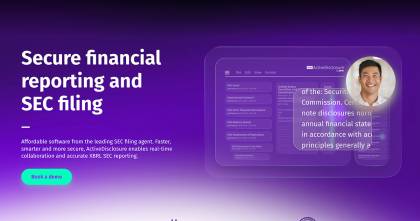Entering into a derivatives contract, such as when buying futures or making investments based on exchange rates, can be risky. The asset or currency may not perform as expected, leading the derivative to lose value. When funds invest in these securities, they must evaluate the derivatives’ risk and the potential effects on the entire fund.
The SEC requires that certain funds meet specific requirements to engage in derivatives transactions, under the guidance of Rule 18f-4. This rule specifies which funds must comply and the steps that must be followed in order to maintain compliance. With an understanding of the requirements and limits of the rule, funds advisers and other stakeholders can determine how best to comply with regulations.
What Is SEC Rule 18f-4?
Per the Investment Company Act of 1940, funds had limits on the types of investments they could make — specifically if those investments required them to buy or provide cash under certain conditions. This act presumed that investment approaches like derivatives contracts were fairly uncommon. By the 2020s, derivatives had become a common way for funds and investors to adjust risk levels by signing contracts based on the performance of a particular asset. The old guidance no longer reflected the needs of a modern market, so the SEC adopted Rule 18f-4 in 2020.
Under SEC Rule 18f-4, funds have a streamlined set of requirements they must follow if they want to make derivatives a part of their investment portfolios. In general, the new guidelines center on a robust assessment of risk for the derivatives contracts, alone and in relation to the risk of the fund as a whole. Some organizations may exempt themselves from these regulations, but it depends on a few factors. The ultimate goal of this rule is to provide guidance for fund managers wanting to engage in derivatives trading, while providing maximum protection and transparency to investors in those funds.
Who Must Comply With Rule 18f-4?
Although some funds derivatives may not need to comply with the guidelines set in rule 18f-4, many do. Specifically, this rule applies to mutual funds, ETFs under Rule 6c-11, closed-end funds, and any business development company that makes derivatives transactions.
Additionally, funds that want to engage in reverse repurchase agreements or unfunded commitment agreements may need to comply with some or all components of the rule, depending on how the fund classifies these agreements and other factors. There are limited exceptions for organizations, depending on their derivatives exposure. Funds that keep their exposure below 10% of net assets may be able to avoid having to follow the detailed guidelines, but this exception is fairly strict. If a fund rises above that threshold, they must correct within 30 days or meet full program requirements.
Core Components of Rule 18f-4
In order to comply with Rule 18f-4, organizations must first determine whether the rule is applicable to their funds. If so, they may need to meet some or all these requirements:
- Appointment of Derivatives Risk Manager: The fund must appoint a derivatives risk manager to provide key oversight of the performance of derivatives, as well as the derivatives risk management program, through mandatory annual reporting. This risk manager cannot be the fund’s portfolio manager. Rather, they must serve as an officer of the fund’s investment adviser, with a direct reporting line to the fund’s board of directors.
- Creation of Derivatives Risk Management Program (DRMP): Funds must create a risk management program for derivatives. This program should include development of risk guidelines that are consistent and enforceable; stress testing of the portfolio to evaluate potential weaknesses; and an internal reporting and escalation structure. The risk manager should provide regular review of the derivatives performance and the program.
- Establishment of Board Oversight: Before execution of the DRMP, the board of directors must approve it. In addition, the board must review annual reports from the derivatives risk manager.
- Limit on Value-at-Risk (VaR): Funds may use either a relative or absolute VaR test, depending on the derivatives risk manager’s assessment of the designated reference portfolio. For the relative test, the fund’s VaR cannot exceed 200% of the value of the reference, with few exceptions. For the absolute test, the fund’s VaR can’t go above 20% of its net assets, also with limited exceptions.
- Limited Derivatives Users Exceptions: Funds that keep their derivatives exposure to less than 10% of net assets may not be required to meet all requirements. Under Rule 18f-4, derivatives exposure is calculated primarily as the sum of the notional amounts of derivatives (with specified adjustments) plus certain other transactions, per the rule’s formula. Should funds briefly exceed the 10% cap, the fund must promptly reduce exposure below 10% or rely on the full risk management program to provide full compliance with requirements.
- Recordkeeping and Compliance Reporting: Funds must provide regular reporting concerning their actions within the rules. Forms might include Form N-PORT, Form N-RN, Form N-CEN, or others, depending on the assessments the fund uses for VaR and its exposure. Funds also must stay current on other SEC compliance disclosures and keep data for at least five years.
Best Practices for Rule 18f-4 Compliance
Funds that want to make derivatives transactions should make sure they understand the requirements and plan ahead to meet them. Best practices include:
- Selecting a derivatives risk manager with experience overseeing portfolios, evaluating risk, and providing detailed reporting.
- Establishing a documented derivatives risk management program that is clear, enforceable, and available to all relevant parties.
- Defining roles and processes for compliance, so that everyone involved knows what to do.
- Providing education to board members and compliance teams on new processes and responsibilities.
- Creating scenarios to stress-test the fund and determine if fund leverage risk or exposure exceeds thresholds.
- Using the right VaR model and relying on compliant systems for calculation.
- Maintaining detailed, organized records of test logs, VaR results, and program reviews.
Early preparation can minimize confusion and the risk of noncompliance.
Get Support for Rule 18f-4 Compliance
Compliance with the SEC final rule on derivatives use by registered funds and BDCs requires regular communication and preparation of detailed documentation, but it does not have to be overwhelming. Many organizations find that the use of software can simplify the effort, reducing the rate of errors and ensuring that documents are prepared and ready for review within designated timelines.
DFIN offers a range of products designed to improve compliance. ActiveDisclosure simplifies the work of preparing disclosures, with an adaptive system that scales for growth and financial reporting needs. In addition, our experts can provide effective guidance on VaR testing, board reporting, and SEC audit readiness. To learn more about our products and services, request a demo today.

